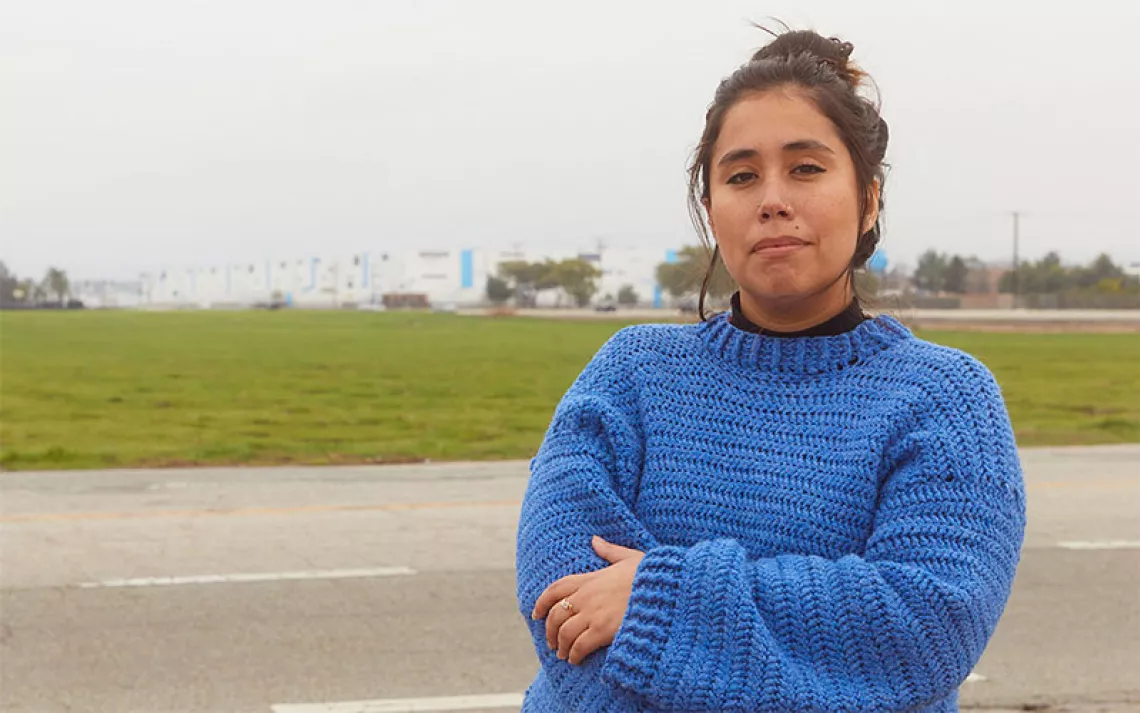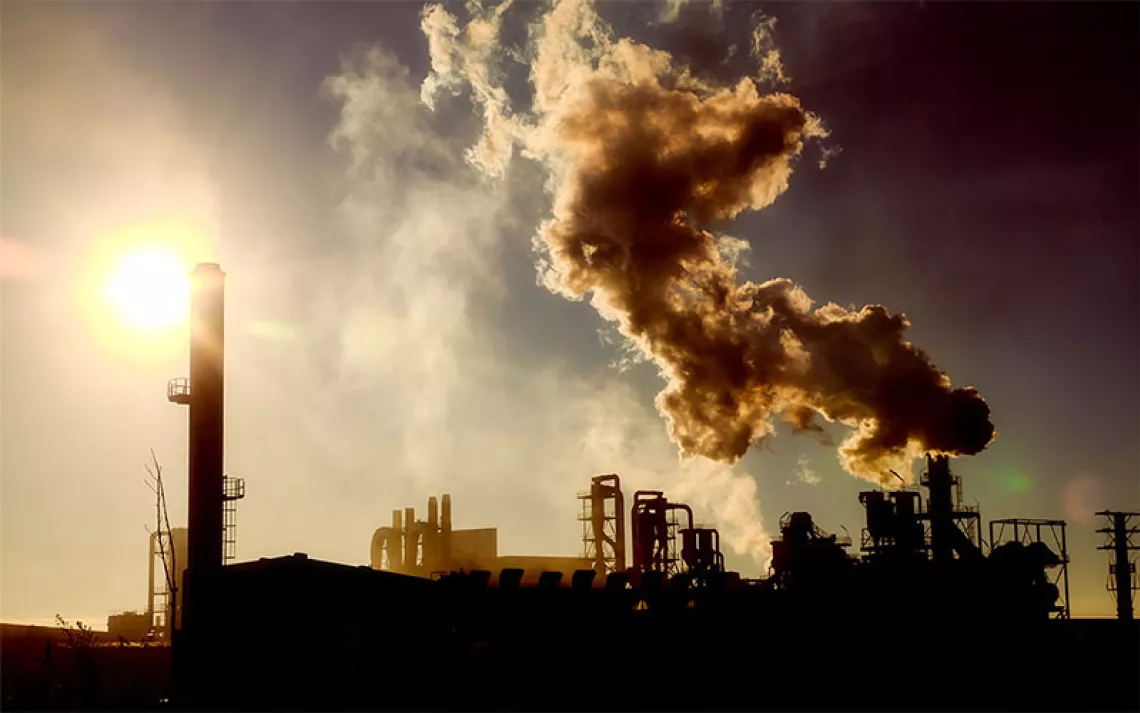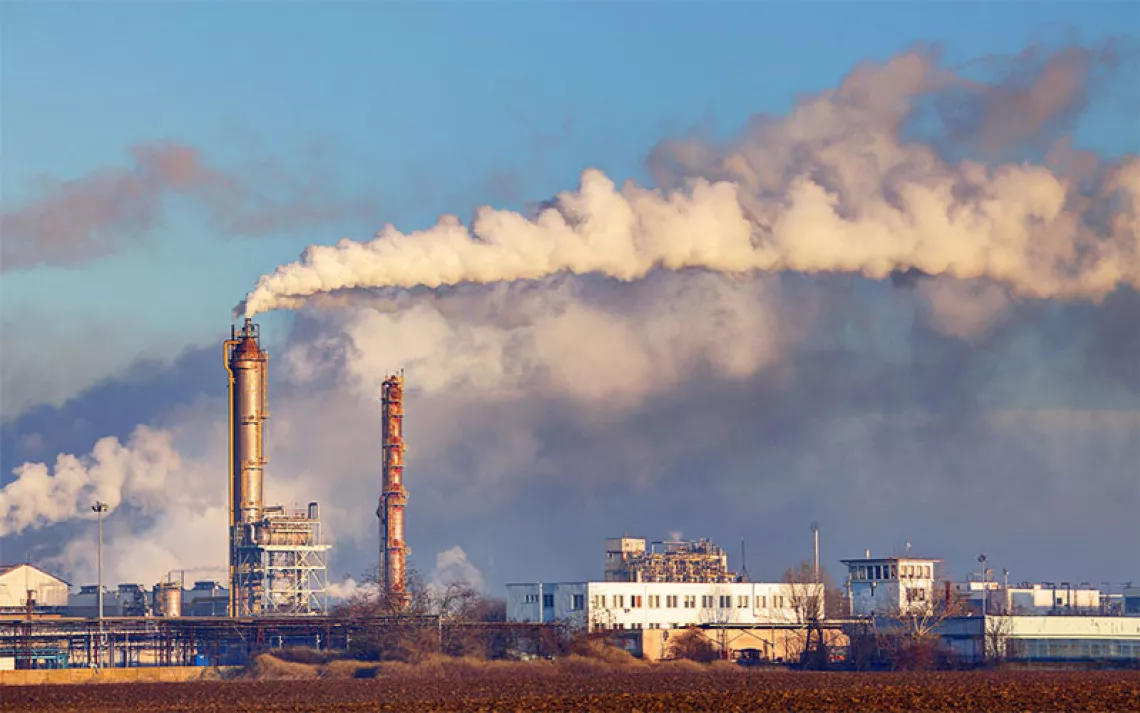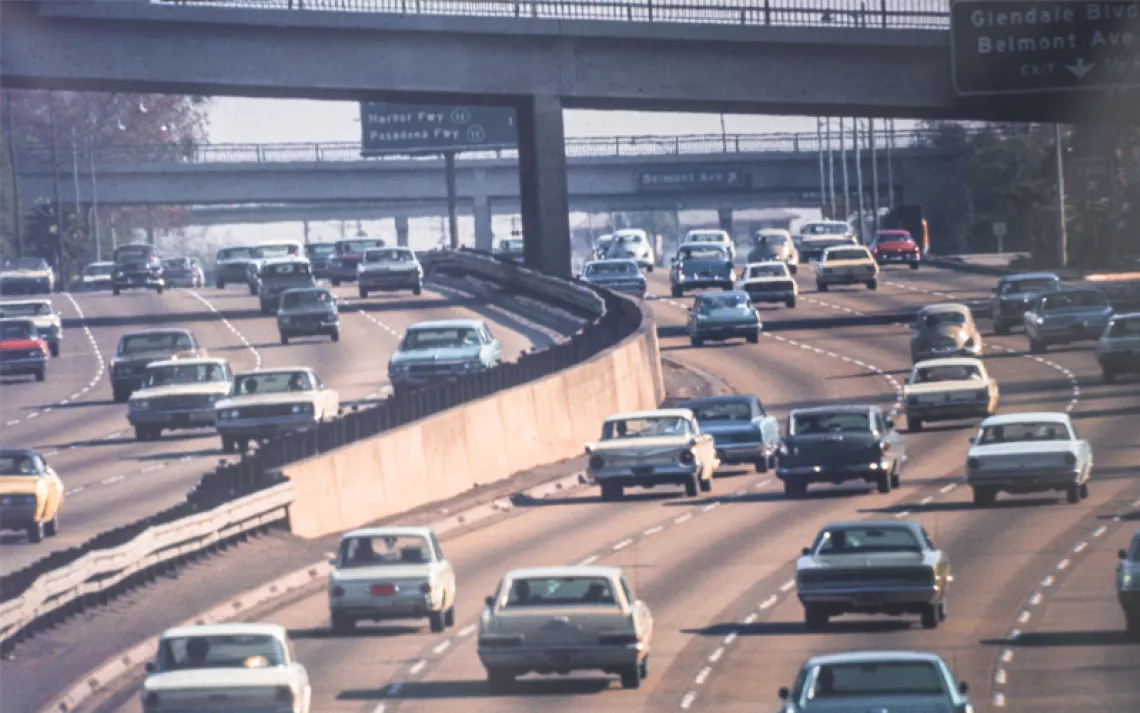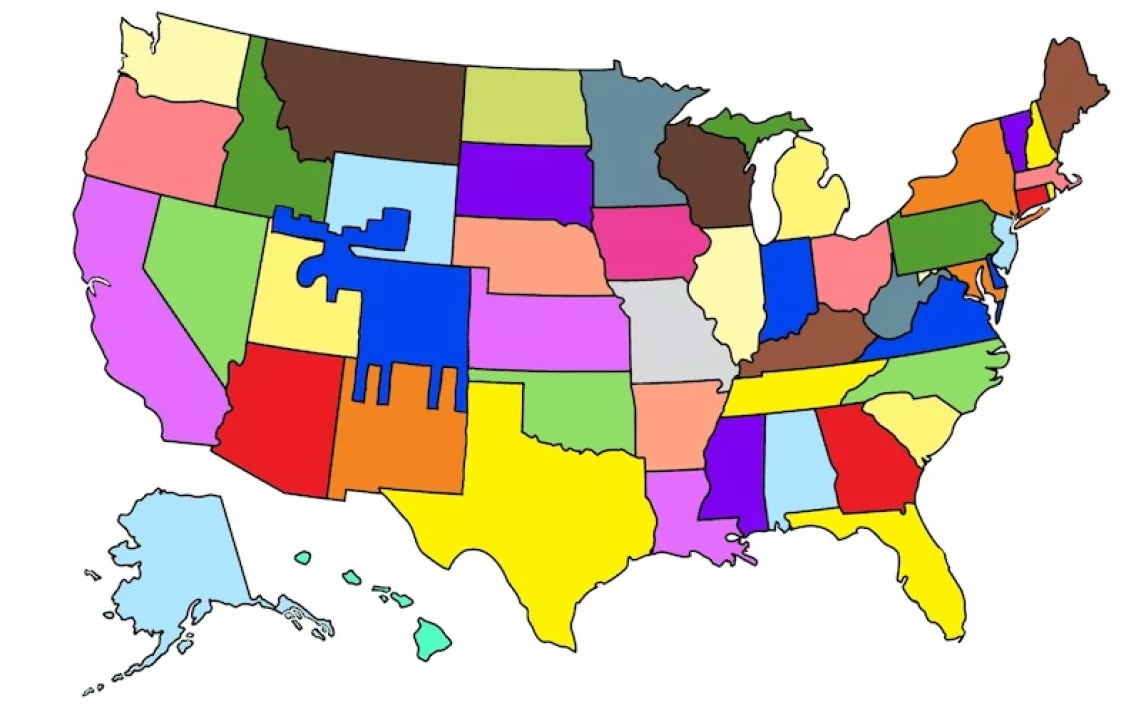The State of the Air Is Improving, But More Needs to Be Done
American Lung Association scorecard lands as Peoples Climate March ramps up
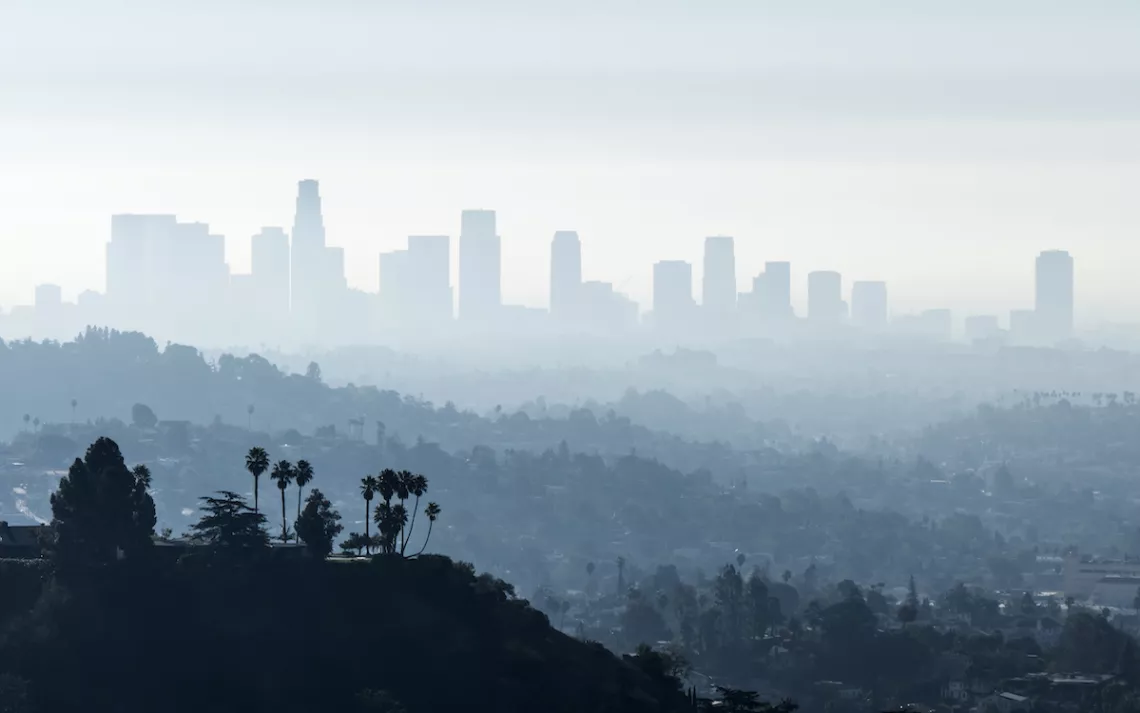
Photo by trekandshoot/iStock
The American Lung Association released its 18th-annual State of the Air report today, just days before Earth Day, the March for Science, and the Peoples Climate March. The findings are mixed. While cities continue to show improvement in air quality, there are still 125 million people, nearly four in 10, living in areas with unhealthy air, where either ozone or particle pollution pose serious risk for children, seniors, and those living in poor or low-income communities. Meanwhile, spikes in short-term particle levels are further evidence that climate change is impacting air pollution.
The effects of climate change—drought, wildfire—are bad for air quality. So are the causes. Burning wood, coal, and fossil fuels all produce carbon dioxide (CO2), which is one of the primary causes of climate change.
State of the Air uses three scorecards to evaluate pollution levels from year-round particles, short-term particles, and ozone. Particle pollution, or soot, is the byproduct of the combustion of coal, wood, or fuel. Secondary particles are formed in the atmosphere as a result of sulfur dioxide (SO2) or nitrogen oxide (NOx) emissions, all of which can penetrate deep into the lungs and cause coughing, wheezing, shortness of breath, and a wide range of cardiovascular and lung problems.
Six of the cities most polluted by short-term particles are in California: Bakersfield ranked #1, followed by Visalia-Porterville-Hanford #2, Fresno-Madera #3, and Modesto-Merced #4. San Jose-San Francisco-Oakland and Los Angeles-Long Beach came in at #6 and #9, respectively.
For the most ozone-polluted cities, Los Angeles-Long Beach topped the list at #1, followed by Bakersfield #2, Fresno-Madera #3, Visalia-Porterville-Hanford #4, and Phoenix-Mesa-Scottsdale in Arizona at #5.
While California is particularly vulnerable to air pollution because of its unique geography and the nature of its air basins, where mountains hold in pollution, the state’s recent multiyear drought has also been a factor. Dry weather conditions often lead to high ozone levels.
On the list of cleanest cities, Burlington-South Burlington in Vermont topped the list at #1, followed by Cape Coral-Fort Myers-Naples in Florida at #2, Elmira-Corning in New York at #3, Honolulu at #4, and Palm Bay-Melbourne-Titusville in Florida at #5. Geography was a factor here, too—many of these cities have prevailing winds that do not blow pollution in from other sources, but instead blow whatever pollution is produced locally back out.
Good policy also played a role. Many of the cleanest cities have benefited from progress being made to implement the provisions of the Clean Air Act, such that the largest sources of pollution in those communities have been cleaned up. That important work, according to Paul Billings, the national senior vice president for advocacy at the American Lung Association, has led to considerable progress in recent years.
“More and more, electricity is being generated from cleaner sources than it was just a few years ago,” he said in an interview, citing the country’s tougher standards for cars and trucks, the widespread decommissioning and retrofitting of coal-fired power plants, and the rise of wind and solar. “All these things help to reduce the emissions that form both ozone and particle pollution, and that threaten public health.”
“The report shows the Clean Air Act is working,” Billings said. “But it also shows that we still have a long way to go. Far too many people are breathing in far too many days of unhealthy air.”
Low-income communities, in addition to children and the elderly, are particularly vulnerable to dirty air, according to State of the Air. Just under 17 million seniors over age 65 and nearly 30 million children under 18 live in counties that flunked their test for at least one air pollutant. More than 17.7 million low-income and poor people live in counties that flunked the test, with over 3 million living in counties that failed tests for all three pollutants.
“We know from the scientific literature that people of lower socioeconomic status have less access to health care, and often live in places that have a disproportionate burden of environmental threats like air pollution,” Billings says. “People that live near roadways like major interstates, or adjacent to major manufacturing or refineries, or live downwind from the dirtiest sources of air pollution are often the people of lower income. The combination of lack of access to health care and where people live can mean they bear a disproportionate burden of air pollution.”
The report arrives at a fraught moment for the climate action and environmental protection movement. As president, Donald Trump has wasted no time trying to force a national realignment away from renewable energy toward dirty fossil fuels like coal. He recently issued a broad executive order instructing the EPA to begin the process of dismantling the Clean Power Plan, an Obama-era initiative to clean up the aging coal- and gas-fired power plants that produce up to 40 percent of CO2 emissions in the United States. His top environmental officer, EPA administrator Scott Pruitt, recently called for the United States to withdraw from the Paris Agreement, saying the historic accord reached last year to respond to global climate change is “a bad deal for America.”
But while Trump’s attack on pollution standards has many calling for those standards to be protected, some experts point out that saving lives from air pollution has as much to do with strengthening existing federal air-quality rules and regulations as it does with protecting them.
Douglas Dockery is the John L. Loeb and Frances Lehman Loeb Professor of Environmental Epidemiology at the Harvard T.H. Chan School of Public Health. He led a team of investigators that produced the groundbreaking Six Cities Study of Air Pollution and Health in 1993, which revealed that people living in communities with worse air pollution were dying faster than people living in cleaner cities. The researchers discovered that communities located in areas that met the existing air pollution standards at that time were as much at risk.
“When we made that finding, all those communities were in compliance with the existing standards, and yet there was clear evidence that even at those levels, people were suffering decreased life expectancy from living with the air pollution in those communities,” he said in an interview. “In the follow-up studies we did, we showed that when air quality got better, especially in the most polluted cities, there were improvements in life expectancies in those communities. But we also saw improvements in life expectancy when air quality got better in the cleanest communities. So the standards are not providing a bright line in defining what is healthy or unhealthy. They provide a target that we should be working toward. The evidence suggests that there are benefits to be attained from improving the air quality at all levels, even in what we consider clean communities now.”
That’s why air-quality-monitoring programs like State of the Air, Dockery points out, are vitally important—to continue to put pressure on decision-makers to improve air quality for all communities, and to produce cleaner technologies for achieving that goal. Those programs are now increasingly under threat given the Trump administration’s proposed budget cuts, which has Dockery concerned.
“With the budget cuts, there would be less money flowing down from the federal government to state agencies, where this kind of monitoring is taking place. There’s going to be pressure, I presume, to reduce the amount of monitoring as a result. If we’re not measuring what the air quality is, and we don’t have these surveillance systems in place, and we don’t have researchers like those at the American Lung Association monitoring this, then there’s the possibility of retrenchment, and real damage being done. To me, that’s the real threat. We’re going to lose that eye on air quality across the country.”
Trump’s budget proposal so far is just that—a “skinny budget” laying out a vision that Congress will soon take into consideration. The vision is a stark one however, slashing public funds across the federal government, with the most draconian cuts targeting environmental programs. And while rules such as the Clean Power Plan can’t be withdrawn or removed simply with the stroke of a pen, efforts to roll them back could freeze the rules, and the benefits they would bring, for years.
The communities most vulnerable to air pollution will suffer the most, according to Paul Billings. Billings says now is the time for people to speak up and make clear to the nation’s elected officials and the new administration that clean air matters. “We at the American Lung Association intend to use all of our tools to block efforts to roll back the Clean Power Plan or other rules that require the cleanup of methane from oil- and gas-drilling operations."
“Engagement around public health and climate matters, whether it’s the Peoples Climate March or people making phone calls to their members of Congress or senators’ offices, or writing letters," he says. "All of this is vitally important so elected leaders see that these issues matter deeply to their constituents. The public strongly supports clean air, wants air that is safe and healthy to breathe, and also wants to make sure that the United States is taking steps to address climate change.”
To check the state of the air in your state or by zip code, go to http://www.lung.org/our-initiatives/healthy-air/sota/.
 The Magazine of The Sierra Club
The Magazine of The Sierra Club
